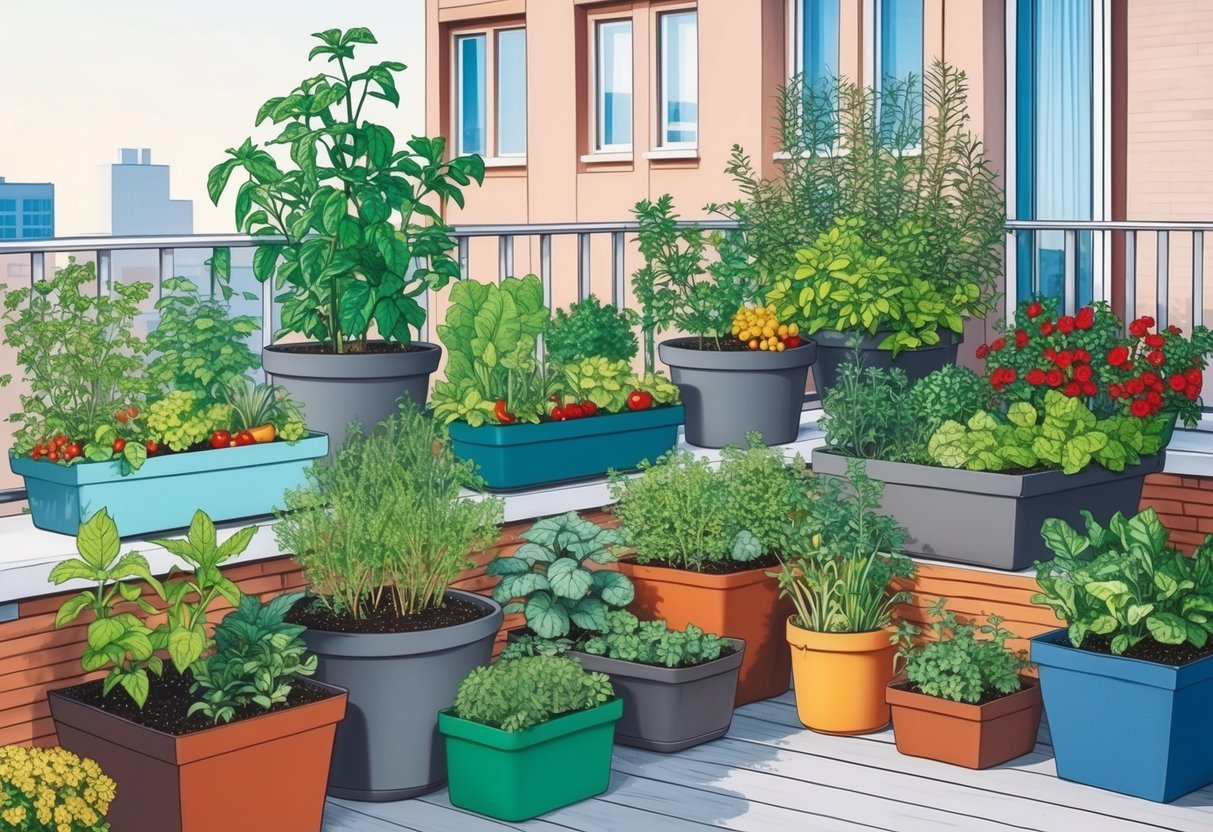
Urban gardeners face unique challenges with limited space, shade, and accessibility. Proven container gardening techniques make it possible to grow a productive and vibrant garden in even the smallest apartments or balconies.
Container gardening allows anyone to cultivate vegetables, herbs, and flowers in small urban spaces using the right pots, soil, and plant varieties. From stacking containers vertically to choosing compact, high-yield crops, these strategies help maximize every inch available for growing.
Smart use of containers provides flexibility and creativity. Planters can be placed on windowsills, hung on walls, or arranged in tiered systems to expand growing space upward.
Proper drainage, quality potting mix, and thoughtful plant selection are essential for healthy container gardens. This ensures plants thrive and yield a satisfying harvest.
For more inspiration and practical methods to maximize results, explore these urban gardening techniques for small spaces.
Core Principles of Container Gardening
Successful container gardening in small urban spaces depends on smart choices in container selection, soil quality, and effective drainage. Each of these elements directly impacts how well container plants grow and how productive and healthy a container garden can be.
Essential Container Types
The choice of container affects plant growth, root development, and water retention. Classic options include terracotta pots, plastic planters, and fabric grow bags.
Terracotta is breathable but dries out faster, making it suitable for Mediterranean herbs. Plastic is lightweight and retains moisture well, ideal for leafy greens.
Fabric grow bags promote air pruning of roots, reducing root circling and improving nutrient uptake. Self-watering containers streamline maintenance with built-in reservoirs.
For vertical gardening in tight spots, wall-mounted planters or stacked containers save valuable floor space and bring more sunlight to container plants. Always select containers with sufficient depth for roots and enough width for mature plant size.
Ensure they are sturdy, UV-resistant (for outdoor use), and easy to move when needed. Versatility and portability are key for adapting to season changes or shifting sunlight in urban gardens.
Selecting Quality Soil Mix
Using the right soil mix is crucial for thriving container gardens. Regular garden soil can be too dense, causing poor drainage and compaction.
Instead, use a custom blend designed specifically for container gardening. This usually combines peat moss or coconut coir for moisture retention, perlite or vermiculite for aeration, and quality compost for essential nutrients.
Adding slow-release organic fertilizer supports steady growth, especially for fruiting vegetables and flowers. The best mixes are loose, light, and drain freely, providing oxygen to plant roots without drying too quickly.
A table of basic components for a home-made potting mix:
| Component | Function |
|---|---|
| Peat/coir | Moisture retention |
| Perlite | Aeration/drainage |
| Compost | Nutrient supply |
| Sand (optional) | Extra drainage |
Test pH for plants sensitive to acidity, as some vegetables and flowers have specific soil preferences.
Effective Drainage Strategies
Drainage is often overlooked, yet it is vital in preventing waterlogging and root rot in container plants. Always choose containers with drainage holes; if they are missing, drill your own where possible.
Elevate pots on bricks or pot feet to allow excess water to escape, especially on balconies or patios. A drainage layer of gravel or broken pottery shards at the pot’s base is widely debated.
While it can help, using a coarse-textured soil mix often achieves better long-term results. Mulching container surfaces with bark chips or straw conserves moisture but still allows proper drainage.
Check drainage regularly, particularly after heavy rainfall or watering. Observing how quickly water escapes through the bottom after watering gives a clear picture of soil health and helps prevent problems before they affect container garden productivity.
For more container gardening techniques and design ideas, visit Proven Winners Container Gardening Guide.
Designing for Small Urban Spaces
Efficient container gardening in small urban environments depends on smart use of space and adapting to available light. With careful planning, even tiny balconies and patios can support a thriving vertical garden or compact container oasis.
Utilizing Vertical Spaces
Making the most of vertical gardening is critical in small spaces. Walls, fences, and balcony railings can all be used to add layers of growing area, freeing up floor space for foot traffic or larger containers.
Hanging baskets, tiered plant stands, and wall-mounted planters are popular options. A living wall built with modular pocket planters or felt growing panels lets gardeners cultivate a variety of herbs, lettuces, or flowers, multiplying the amount of greenery even in tight quarters.
Vertical setups should be organized for easy access to each plant for watering and harvesting. Arranging containers by plant height and sunlight requirements further helps optimize both growth and space.
For those with limited ground space, balcony railing boxes or stackable pots provide effective ways to make use of vertical surfaces. Consider using trellises for vining vegetables such as tomatoes or cucumbers, which will climb rather than sprawl.
Maximizing Sunlight Exposure
Access to full sun can be a challenge in dense urban settings, requiring careful planning. Identify spots that receive the most sunlight throughout the day, such as southern or western-facing balconies or windowsills.
Choose containers that are easy to reposition and rotate, so plants always face the light. Use reflective surfaces like light-colored walls or material behind plants to increase available light.
Grouping sun-loving plants together ensures efficient use of space in the brightest areas, while those requiring partial sun can be placed in shadier corners. Balconies often receive more consistent exposure, making them ideal for small garden ideas that rely on sun-loving vegetables and herbs.
Compact spaces sometimes require creative solutions. Mirrors, reflective tray linings, or painted surfaces can boost ambient light.
Prioritize the placement of containers for vegetables and herbs that need at least six hours of direct sunlight. Use shade-tolerant varieties for spots that receive less.